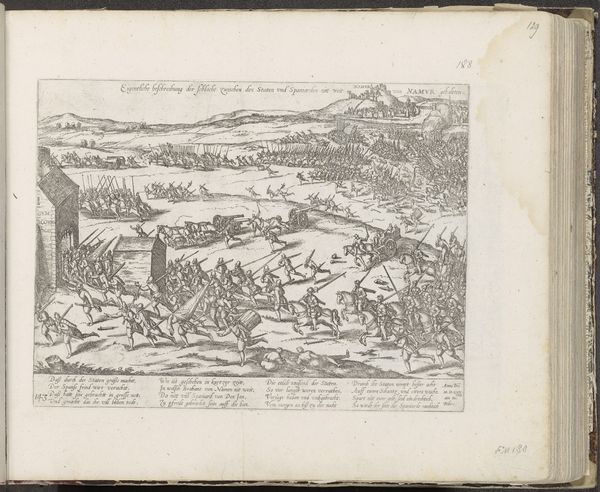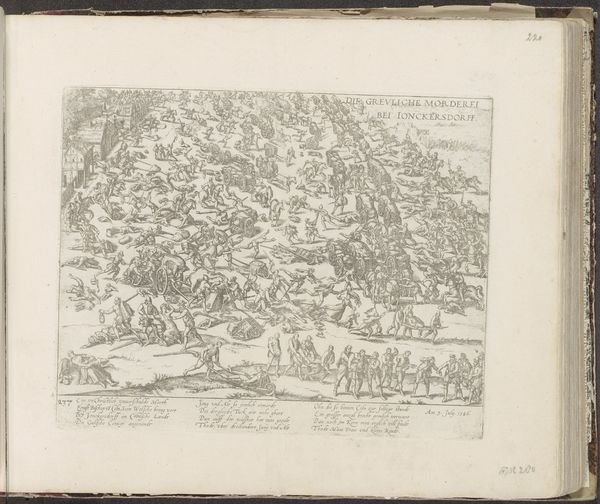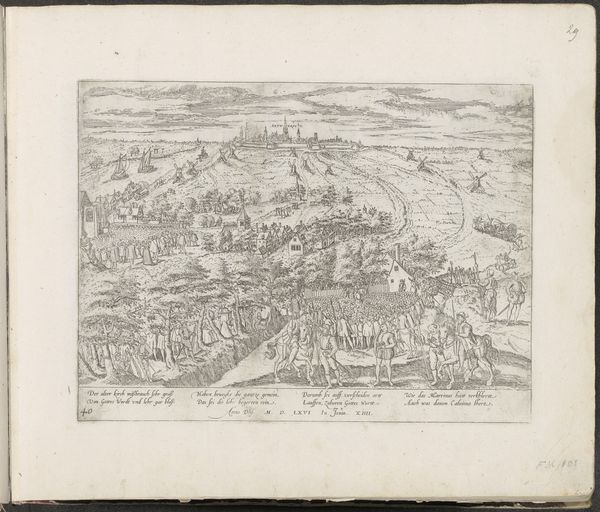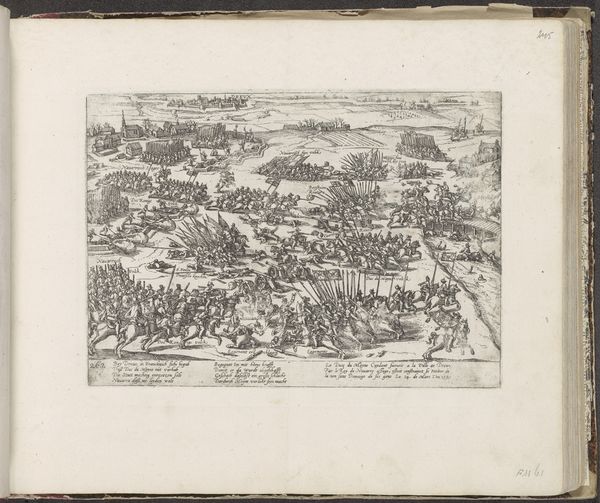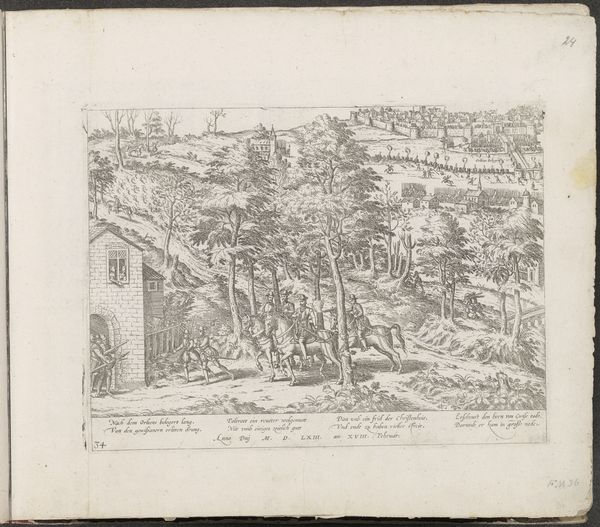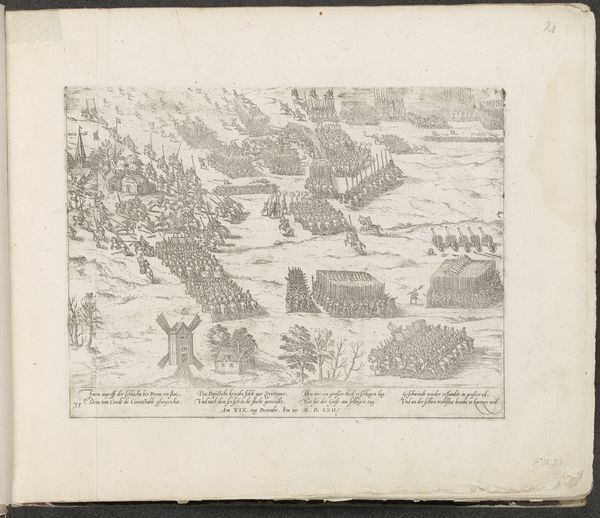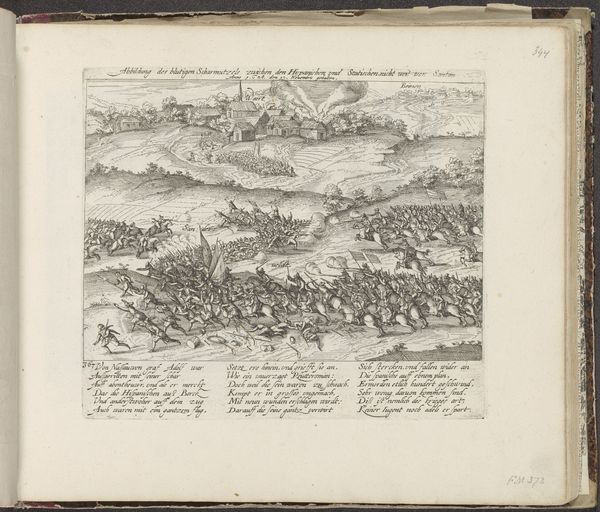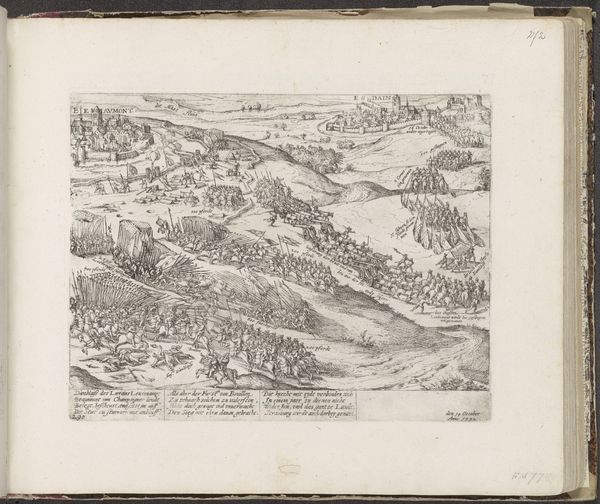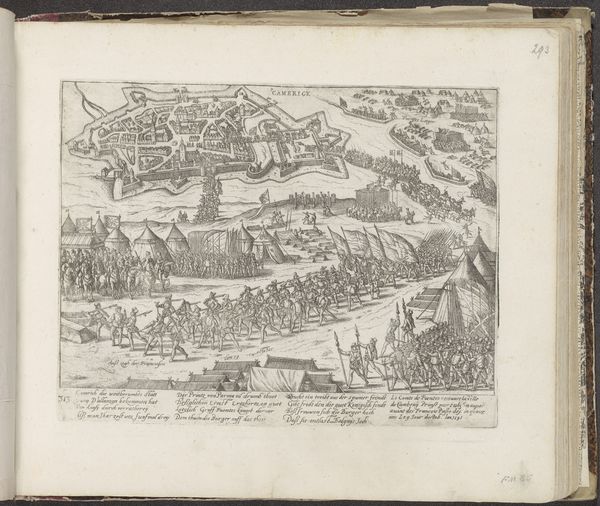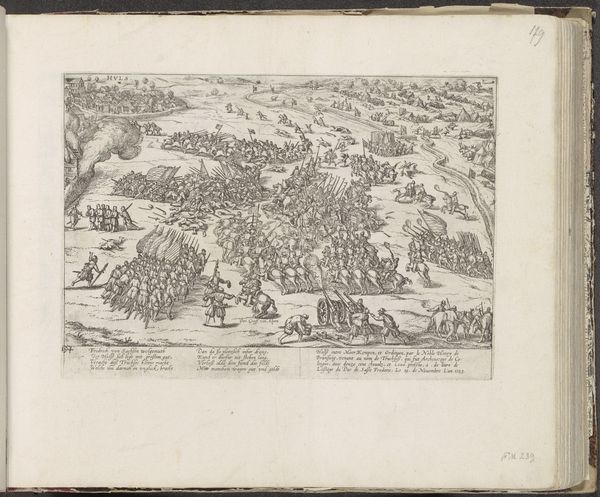
print, engraving
#
narrative-art
# print
#
landscape
#
mannerism
#
figuration
#
history-painting
#
engraving
Dimensions: height 203 mm, width 281 mm
Copyright: Rijks Museum: Open Domain
Curator: Frans Hogenberg's engraving, "Slag bij Tienen, 1576," created circa 1576-1579, captures a pivotal moment in the Eighty Years’ War. This print, housed at the Rijksmuseum, blends landscape and figuration within a Mannerist framework to depict a narrative of historical significance. Editor: Whoa, a battlefield populated by sprinting stick figures! It’s both horrifying and hilarious—a weirdly mesmerizing dance of tiny bodies clashing on a rolling hillside. The little tower in the distance almost feels mocking, like, "Enjoy the show!" Curator: Indeed. Hogenberg uses the landscape to amplify the historical narrative. The high vantage point allows us to view the unfolding battle in its totality. Note the careful rendering of the terrain, which served as a stage for these brutal clashes between combatants. Editor: Brutal is right! But there’s almost no *there* there. It's a bunch of scurrying ants, when I imagine it was awful! Do you think the limited materials back then made them focus less on details, like faces, which takes away from its real punch? Curator: We must consider this piece through the lens of 16th-century visual culture. Hogenberg wasn't necessarily aiming for photorealistic detail, instead, he captured the overall feeling and strategy of war. It functioned as a news report, and historical document in one. Consider that Hogenberg's depictions served a political purpose—often intended to influence public opinion or commemorate historical events within specific cultural and political contexts. Editor: Okay, "news report." So less a horror film, more of a dramatic headline in visual form. I get it. Still, seeing history so… distilled. It makes you wonder what details get lost— whose stories get overshadowed by this bird's eye view, I want the muddy boots perspective! Curator: Absolutely. Interrogating the absence is key. While the print provides a grand overview, it tends to flatten the experiences of those most affected, as with most of that time period it seems to speak mainly to wealth and power. Editor: Right! It reminds you of all of history that slips through the cracks. Curator: It is this constant tension—between overarching narrative and individual experiences—that renders it thought-provoking and still incredibly relevant. Editor: So, not just sprinting stick figures. Okay, I am looking closer! Thanks for giving this frantic scene some serious historical weight.
Comments
No comments
Be the first to comment and join the conversation on the ultimate creative platform.
